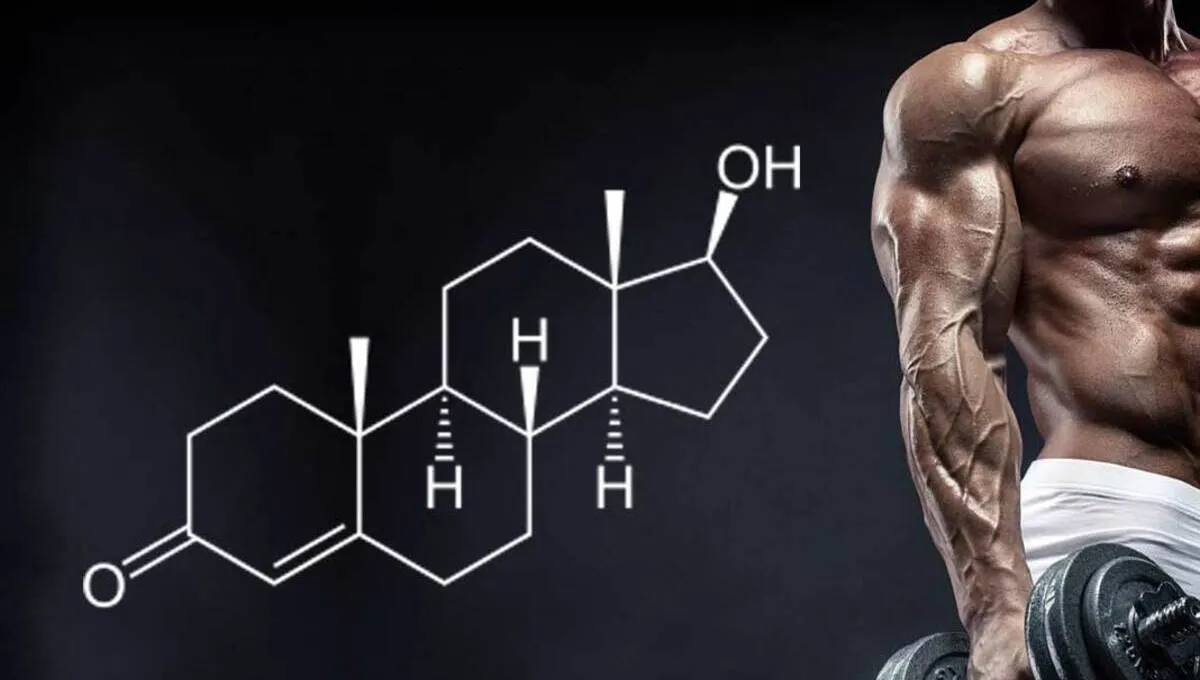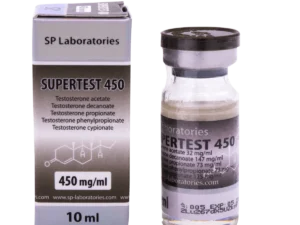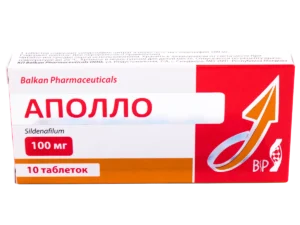instruction for administration
testosteronă u
injectible solution
NOMENCLATURE
Testosterone U
International Common Name (ICN) of the active substance
Testosteronum
COMPOSITION
1 ml solution for injection contains:
Active substance: testosterone undecanoate 250 mg;
excipients: benzylbenzoate, peach oil.
PHARMACEUTICAL FORM
Injectible solution.
DESCRIPTION OF THE MEDICINAL PRODUCT
Clear, oily, yellow solution.
THE PHARMACOTERAPEUTICAL GROUP and the ATC Code
Androgens, derivatives of 3-oxoandrosten (4), G03BA03.
PHARMACOLOGICAL PROPERTIES
Pharmacodynamic properties.
Testosterone undecanoate is an ester of natural androgen, testosterone. The active form, testosterone, results from cleavage of the side chain.
Testosterone is the primary androgenic hormone synthesized and released by the testicles. It is responsible for the growth and development of male sexual organs and secondary sexual characteristics (maturation of prostate, seminal vesicles, penis and scrotum), male hair distribution (face, pubis, chest), laryngeal development, body muscles and fat distribution. Retains nitrogen, sodium, potassium and phosphorus in the body, increases anabolism and reduces protein catabolism. The premature increase in testosterone plasma concentration in the prepubertal period causes the epiphysis to close and stop growth. Stimulates the production of erythropoietin and erythrocytes. The feedback mechanism inhibits the secretion of luteinizing hormones and pituitary-like pituitary glands and causes the suppression of spermatogenesis.
In women inhibits pituitary gonadrophic function, ovarian function, mammary glands, causes endometrial atrophy. Due to estrogen antagonist action, it is used in the treatment of uterine miosis, endometriosis, breast cancer. It manifests beneficial action during the climacteric period.
Properties and pharmacokinetics
Absorption
Testosterone undecanoate is administered intramuscularly, thus avoiding the phenomenon of first passage of the liver. Following intramuscular injection, testosterone undecanoate in the form of an oily solution is almost completely cleared in testosterone and undecanoic acid.
Distribution
In two separate studies, the maximum mean testosterone concentrations in men with hypogonadism were 45 nmol/L on the seventh day and 24 nmol/l, respectively, on the 14th day following a single intramuscular administration of 1000 mg of testosterone undecanoate. Post-peak testosterone levels decreased with an estimated half-life of 53 days.
Metabolism
Testosterone, obtained by cleaving the testosterone undecanoate ester, is metabolised and eliminated similarly to testosterone endogenously.
Elimination
Testosterone is extensively metabolised by the liver and extrahepatic.
After administration of radioactive isotope-labeled testosterone, approximately 90% of radioactivity is eliminated in the urine as glucuronide and sulphate and 6% is excreted in the feces after the enterohepatic circuit. Urinary metabolites include androsterone and etiocolanolone.
THERAPEUTICAL INDICATIONS
Testosterone replacement therapy for male hypogonadism, when testosterone deficiency was confirmed by clinical evaluation and biochemical tests.
DOSES AND METHOD OF ADMINISTRATION
Administration method: intramuscularly.
Dosage
An ampoule of Testosterone U (corresponding to 1000 mg of testosterone undecanoate) is injected every 10-14 weeks. This frequency of administration is effective in maintaining a sufficient concentration of testosterone and does not produce accumulation of the drug.
Injections should be performed very slowly. Testosterone U is injected strictly intramuscularly. Particular attention should be paid to avoiding intravascular injection.
Initiation of treatment
The plasma concentrations of testosterone should be measured before and during initiation of therapy. The first interval between administrations can be reduced to at least 6 weeks. With this loading dose, sufficient steady state concentrations of testosterone can be achieved.
Individualisation of treatment
It is advisable to measure testosterone serum concentrations occasionally at the end of the injection interval. Plasma concentrations below normal values indicate the need to reduce the interval between administrations. In case of high plasma concentrations, an increase in the interval between administrations may be considered. The injection interval should remain at the recommended value of 10 to 14 weeks.
Additional information on special patient groups
Children and adolescents
Testosterone U is not indicated for use in children and adolescents and has not been clinically evaluated in men under 18 years of age.
Patients and the elderly
Limited data did not suggest the need for dose adjustment in elderly patients.
Patients with liver disease
No studies have been performed in patients with hepatic impairment. The use of Testosterone U is contraindicated in men with past or present liver tumors.
Patients with kidney problems
No studies have been performed in patients with kidney problems.
SIDE EFFECTS
The side effects listed below are classified by frequency, apparatus, system and organ. Frequency groups according to MedDRA Convention: very common (≥1 / 10), common (≥ 1/100 to <1/10), uncommon (≥ 1/1000 and <1/100), rare (≥1 / 10000 and <1 / 1,000), very rare (<1 / 10,000), of unknown frequency (can’t be estimated from the available data).
Blood and lymphatic disorders
Common: polycythemia.
Uncommon: growth hematocrit, increased erythrocyte count, hemoglobin increase.
Immune system disorders
Uncommon: hypersensitivity.
Metabolic and nutritional disorders
Common: weight gain.
Uncommon: appetite increased, glycosylated hemoglobin increased, hypercholesterolemia, blood triglycerides increased, blood cholesterol increased.
Psychiatric disorders
Uncommon: depression, emotional disorders, insomnia, agitation, aggression, irritability.
Nervous system disorders
Uncommon: headache, migraine, tremor.
Vascular disorders
Common: hot flashes.
Uncommon: hypertension arterial, dizziness.
Respiratory, thoracic and mediastinal disorders
Uncommon: bronchitis, sinusitis, cough, dyspnoea, snoring, dysphonia.
Gastrointestinal disorders
Uncommon: diarrhea, nausea.
Hepatobiliary disorders
Uncommon: increase in values aspartate.
Skin and subcutaneous tissue disorders
Common: acne.
Uncommon: alopecia, erythema, rash, maculo-papular rash, pruritus, xerodermia.
Musculoskeletal and connective tissue disorders
Uncommon: arthralgia, pain in the extremities, muscle spasms, muscle tension, myalgia, muscular and skeletal block, blood creatinine increase.
Renal and urinary disorders
Uncommon: decreased urinary flow, urinary retention, nocturia, dysuria.
Reproductive system and breast disorders
Common: Increased prostatic antigen, benign prostatic hyperplasia.
Uncommon: prostatic intraepithelial neoplasia, prostate induration, prostatitis, increased libido, decreased libido, testicular pain, breast augmentation, mastodynamics, gynecomastia.
General disorders at administration site
Common: various types of injection site reactions, pain, discomfort, pruritus, erythema, hematoma, irritation.
Uncommon: fatigue, asthenia, hyperhidrosis, night sweats.
Diagnostic Investigations
Uncommon: increase in estradiol, increase in free testosterone in the blood.
CONTRAINDICATIONS
– Hypersensitivity to the active substance or to any of the excipients.
– Androgen-dependent carcinoma of the prostate or mammary gland of the male.
– Hypercalcemia that accompanies malignant tumors.
– Liver tumors in history or present.
– Women.
– Men younger than 18 years old.
OVERDOSE
No special therapeutic measures are required, apart from the discontinuation treatment with testosterone or dose reduction.
WARNINGS AND SPECIAL PRECAUTIONS FOR USE
Elderly patients treated with androgens may be at risk of developing prostatic hyperplasia. Although there are no clear indications of the androgen challenge of prostate cancer, they can increase the chances of developing an already existing prostate cancer. Thus, prostate cancer should be excluded before starting treatment with testosterone.
As a precaution, regular prostate examination in men is recommended. Hemoglobin and hematocrit levels should be periodically checked in long-term androgenic patients to detect polycysticemia. Cases of malignant and benign liver tumors have been reported with users of hormonal substances, such as androgenic compounds. If abdominal pain, liver enlargement or signs of intraabdominal haemorrhage occur in men using Testosterone U, an abdominal tumor should be considered for differential diagnosis. Caution is advised in patients with edema, since androgen therapy may increase sodium retention. No clinical studies with testosterone undecanoate have been performed in children or adolescents under 18 years of age. In children, testosterone, in addition to masculinization, can cause accelerated growth and bone maturation and premature closure of the epiphysis, thereby reducing the final height.
It is also possible to develop common acne. A pre-existing condition of sleep apnea may be potentiated. As with all oily solutions, testosterone undecanoate should be injected strictly intramuscularly and very slowly. In rare cases, pulmonary microembolism of oily solutions may lead to symptoms such as cough, dyspnoea, malaise, hyperhidrosis, chest pain, dizziness, paraesthesia or syncope. These reactions can occur during or immediately after the injection and are reversible. Treatment is usually supportive, such as supplemental oxygen.
Pregnancy and lactation
It is contraindicated during pregnancy and lactation.
Effects on ability to drive or use machines
Testosterone U does not affect the ability to drive or use machines.
INTERACTIONS WITH OTHER MEDICINES, OTHER TYPES OF INTERACTION
– Medicines that affect testosterone
Barbiturates and other enzyme inducers
There may be interactions with microsomal enzyme-inducing drugs, which may increase testosterone clearance.
– The effects of androgen on other medicines
Oxifenbutazone
Increased levels of serum oxyphenbutazone have been reported.
Oral anticoagulants
Testosterone and its derivatives have been reported to increase the activity of oral anticoagulants, with dose adjustments possible. Independently of these results, limiting the use of intramuscular injections in patients with hereditary or acquired blood clotting problems should be considered as a general rule.
Hypoglycemic
Androgens can potentiate the effects of glucose lowering insulin. Thus, it may be necessary to reduce the dose of hypoglycaemic agents.
PRESENTATION, PACKAGING
250 mg/ml solution for injection.
4 ml in ampoules. Five (5) or ten (10) vials together with the carton instructions.
STORAGE
Keep at temperatures below 25 °C.
Keep out of the reach and sight of children.
TERMS OF VALIDITY
3 years. Do not use after the expiry date stated on the pack.
LEGAL STATUS
With prescription.
CERTIFICATE OF REGISTRATION
SC Balkan Pharmaceuticals SRL N. Grădescu str., 4, MD-2002, or. Chisinau, Republic of Moldova.
The manufacturer
SC Balkan Pharmaceuticals SRL Industrial Street, 7 / A, MD-2091, or. Singera, Republic of Moldova.
This product you can buy here.







